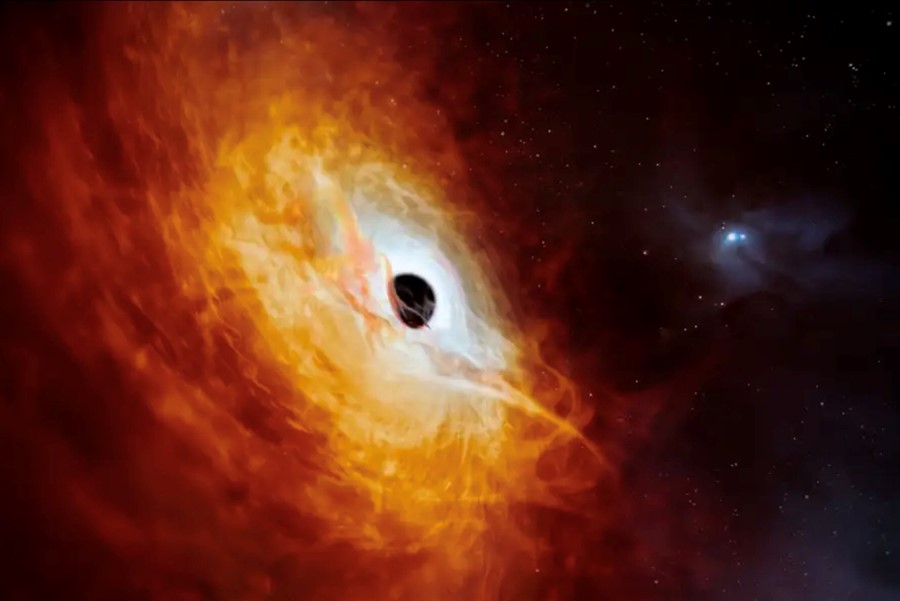The newly-discovered celestial object is the brightest and hungriest discovered to date
Earlier this week (February 19) scientists unveiled the brightest known object in the universe: a quasar, AKA the blazing core of a distant galaxy, powered by a black hole billions of times more massive than our sun. If you’re struggling to imagine something that big, then don’t worry – objects on this kind of scale are pretty much impossible for the human mind to comprehend. To put it into some perspective, though, the black hole is estimated to be ‘eating’ a mass equivalent to our sun every single Earth day, making it the hungriest hole around.
Catchily known as J0529-4351, the object was previously recorded back in 1980, but was initially dismissed as too bright to be a distant quasar. The recent rediscovery comes courtesy of observations by Chile’s Very Large Telescope (not to be confused with the Extremely Large Telescope) which brought its true nature to light.
In a paper published by Nature Astronomy, scientists confirm that the object is not, in fact, a star in the Milky Way (which would have explained its relatively bright appearance for Earth-based observers) but an incredibly bright object much further away. So far away, in fact, that the light it emits has taken 12 billion years to reach the Very Large Telescope’s detectors.
How does a black hole give off light? Well technically, it doesn’t. This means that a black hole is impossible to observe in isolation. However, as its gravitational pull sucks in matter from the rest of the universe, that matter is pulled apart, and this releases a huge amount of light. Taken as a whole, this process forms what’s known as a “quasar”. By identifying and measuring the light from quasars, astronomers can make assumptions about the invisible objects that power them.
According to scientists’ estimates, J0529-4351 is around 17 billion times the mass of our sun, and the disc of light around it measures seven light-years in diameter (making it the largest in the known universe). However, it’s the black hole’s unique hunger – again, it digests a sun-sized mass every day – that makes it particularly luminous, with a brightness described as equivalent to more than 500 trillion suns.
The existence of celestial objects like J0529-4351 is still a tough puzzle to crack, but it’s a potentially important one if we want to unlock the mysteries of how the universe (and, by extension, life on Earth) came into existence. After all, it’s been speculated that every galaxy has a similar supermassive object at its core, including the Milky Way’s very own black hole, Sagittarius A*.




